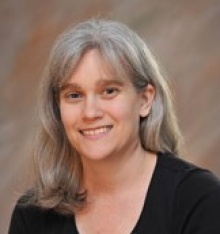Genetics Society of America appoints Laura Rusche to editorial board of GENETICS, Gene Expression Section

Laura Rusche, PhD
Published September 2, 2021
The Genetics Society of America (GSA) announced the appointment of Laura Rusche, PhD, as associate editor on the editorial board of its journal, GENETICS, in the Gene Expression Section. Since 1916, GENETICS has published high–quality, original research presenting novel findings bearing on genetics and, more recently, genomics. The journal publishes empirical studies of organisms ranging from microbes to humans, as well as theoretical work. Rusche has published several of her own papers in GENETICS and says she is honored to be selected for this editorial position. Rusche looks forward to helping colleagues share their studies on gene expression. Read GSA's announcement, here.
Faculty Profile
![Laura Rusche.]()
Laura Rusche
PhD
Research Interests
Chromatin and its impact on gene expression and chromosome function; Gene duplication and the evolution of protein functions; Rewiring of transcriptional circuits.
Education
- BS, Molecular Biophysics & Biochemistry, Yale University
- PhD, Biochemistry, Cellular & Molecular Biology, Johns Hopkins School of Medicine
- Postdoctoral Research, University of California, Berkeley
Research Summary
The Rusche Lab studies chromatin and its impact on gene expression and chromosome function. We also study how protein functions shift over evolutionary time through mechanisms including gene duplication and rewiring of transcriptional circuits. In our studies, we gain an evolutionary perspective by comparing multiple yeast species, taking advantage of the genome editing and comparative genomic approaches available for these species. One arm of our research program focuses on Sir2 proteins (sirtuins), which deacetylate histones to repress transcription. Because sirtuins require NAD+ for activity, they are thought to link the processes they regulate with nutrient availability. We are investigating how the functions of yeast sirtuins have shifted over the course of evolution to enable species to develop distinct responses to low NAD+ stress. Another arm of our research focuses on the nucleosome-binding protein Sir3, which partners with Sir2 to form heterochromatin. We are reconstructing the steps by which Sir3 evolved from the conserved replication protein Orc1 through gene duplication, subfunctionalization, and specialization.
Selected Publications
- Maria, H. and Rusche*, L.N. (submitted) The DNA replication protein Orc1 from the yeast Torulaspora delbrueckii is required for heterochromatin formation but not as a silencer-binding protein. bioRxiv. doi: Link
- Rupert, C.B. and Rusche*, L.N. (2022) The pathogenic yeast Candida parapsilosis forms pseudohyphae through different signaling pathways depending on the available carbon source. mSphere.
Pre-print at doi: Link - Maria, H., Kapoor, S., Liu, T., and Rusche, L.N. (2021) Conservation of a DNA replication motif among phylogenetically distant budding yeast species. Genome Biol Evol. 13(7):evab137. PMID: 34132803 – Link
- Zhao, G. and Rusche, L.N. (2021) Genetic analysis of sirtuin deacetylases in hyphal growth of Candida albicans. mSphere. 6(3):e00053-21. PMID: 33952658 – Link
- Rusche, L.N. (2021) Stable positions of epigenetically inherited centromeres in the emerging fungal pathogen Candida auris and Its relatives. mBio. Jul 6:e0103621. PMID: 34225489 – Link
- Humphrey, K.M., Zhu, L., Hickman, M.A., Hasan, S., Maria, H., Liu, T., Rusche, L.N. (2020) Evolution of distinct responses to low NAD+ stress by rewiring the Sir2 deacetylase network in yeasts. Genetics, 214:855-868. PMID: 32071196 – Link
- Rusche, L.N. (2020) Mobile DNAs and switching mating types in yeast. Elife, 9:e58403. PMID: 32515351 – Link
- Hanner, A.S., Rusche L.N. (2017) The Yeast Heterochromatin Protein Sir3 Experienced Functional Changes in the AAA+ Domain After Gene Duplication and Subfunctionalization. Genetics 207:517-528. PMID:28827288 – Link
- Rupert, C.B., Heltzel, J.M., Taylor, D.J., and Rusche, L.N. (2016) Sporadic gene loss after duplication is associated with functional divergence of sirtuin deacetylases among Candida yeast species. G3 pii: g3.116.033845. doi: 10.1534/g3.116.033845. [Epub ahead of print] – Link
- Kapoor, S., Zhu, L., Froyd, C., Liu, T., and Rusche L.N. (2015) Regional centromeres in the yeast Candida lusitaniae lack pericentromeric heterochromatin. Proc Natl Acad Sci 112:12139-12144. PMID: 26371315 – Link
- Rusche, L.N., Hanner, A.S., Heltzel, J.M.H., Humphrey, K.M., Kapoor, S., and Rupert, C.B. (2015) Sirtuin Deacetylases in Fungi: Connecting metabolism to lifecycle progression, stress response, and genome stability. In: Epigenetics: Current Research and Emerging Trends, Caister Academic Press, edited by Brian P. Chadwick – Link
- Tsai H.J., Baller J.A., Liachko I., Koren A., Burrack L.S., Hickman M.A., Thevandavakkam M.A., Rusche L.N., Berman J. (2014) Origin replication complex binding, nucleosome depletion patterns, and a primary sequence motif can predict origins of replication in a genome with epigenetic centromeres. MBio 5:e01793-14. PMID: 25182328 – Link
- Froyd, C.A., Kapoor, S., Dietrich, F., and Rusche, L.N. (2013) The deacetylase Sir2 from the yeast Clavispora lusitaniae lacks the evolutionarily conserved capacity to generate subtelomeric heterochromatin. PLoS Genetics, 9(10):e1003935. PMID: 24204326 – Link
- Froyd, C.A., and Rusche, L.N. (2011) The duplicated deacetylases Sir2 and Hst1 subfunctionalized by acquiring complementary inactivating mutations. Mol Cell Biol, 31:3351-3365. PMID: 21690292 – Link
- Prescott, J.T., Safi, A., and Rusche, L.N. (2011) A region of the nucleosome required for multiple types of transcriptional silencing in Saccharomyces cerevisiae. Genetics, 188:535-548. PMID: 21546544 – Link
- Hickman, M.A., Froyd, C.A., and Rusche, L.N. (2011) Reinventing heterochromatin in budding yeasts: Sir2 and the origin recognition complex take center stage. Euk Cell, 10:1183-1192. PMID: 21764908 – Link
- Hickman, M. A., and Rusche, L.N. (2010) The transcriptional silencing functions of the yeast protein Orc1/Sir3 subfunctionalized after gene duplication. Proc Natl Acad Sci. 107:19384-19389. PMID: 20974972 – Link
- Lynch, P.J. and Rusche, L.N. (2010) An auxiliary silencer and a boundary element maintain high levels of silencing proteins at HMR in Saccharomyces cerevisiae. Genetics 185:113-127. PMID: 20176978 – Link
- Rusche, L.N. and Rine, J. (2010) Switching the mechanism of mating-type switching: a domesticated transposase supplants a domesticated homing endonuclease. Genes Dev 24:10-14. PMID: 20047997 – Link
- Hickman, M.A., and Rusche, L.N. (2009) The Sir2-Sum1 repressor complex uses promoter-specific and long-range mechanisms to regulate cell identity and sexual cycle in the yeast Kluyveromyces lactis. PLoS Genet 5: e1000710. PMID: 19893609 – Link
- Lynch, P.J. and Rusche, L.N. (2009) A silencer promotes the assembly of silenced chromatin independently of recruitment. Mol Cell Biol. 29:43-56. PMID: 18955502 – Link
- Rusche, L.N., and Lynch, P.J. (2009) Assembling heterochromatin in the appropriate places: A boost is needed. J. Cell Physiol. 219:525-528. PMID: 19259946 – Link
- Safi, A., Wallace, K.A., and Rusche, L.N. (2008) Evolution of a new function through a single amino acid change in the yeast repressor Sum1p. Mol Cell Biol. 28:2567-2578. PMID: 18268008 – Link
- Hickman, M.A. and Rusche, L.N. (2007) Substitution as a mechanism for genetic robustness: The duplicated deacetylases Hst1p and Sir2p in Saccharomyces cerevisiae. PLoS Genet 3:e126. PMID: 17676954 – Link
- Rusche, L.N. and Hickman, M.A. (2007) “Evolution of silencing at the mating-type loci in hemiascomycetes” in Sex in Fungi: molecular determination and evolutionary implications.” Heitman, Casselton, and Kronstad editors, ASM – Link
- Lynch, P.J., Fraser, B.H., Sevastopoulos, E., Rine, J., and Rusche, L.N. (2005) Sum1p, the origin recognition complex, and the spreading of a promoter-specific repressor in Saccharomyces cerevisiae. Mol Cell Biol25:5920-5932. PMID: 15988008 – Link
- Rusche, L.N., Kirchmaier, A.L., and Rine, J. (2003) The establishment, inheritance, and function of silenced chromatin in Saccharomyces cerevisiae. Ann Rev Biochem 72:481-516. PMID: 12676793 – Link
- Rusche, L.N., Kirchmaier, A.L., and Rine, J. (2002) Ordered nucleation and spreading of silenced chromatin in Saccharomyces cerevisiae. Mol Biol Cell 13:2207-2222. PMID: 12134062 – Link
- Rusche, L.N., and Rine, J. (2001) Conversion of a gene-specific repressor to a regional silencer. Genes Dev15:955-967. PMID: 11316790 – Link

